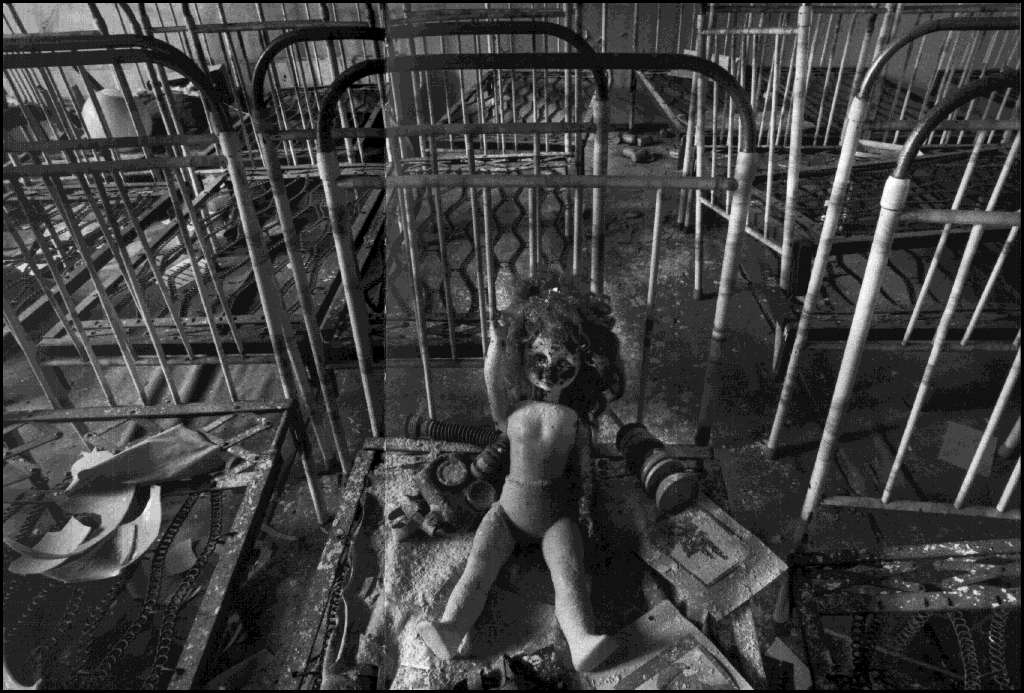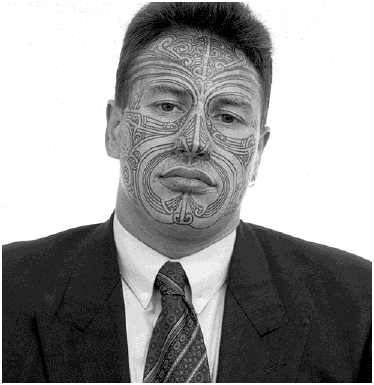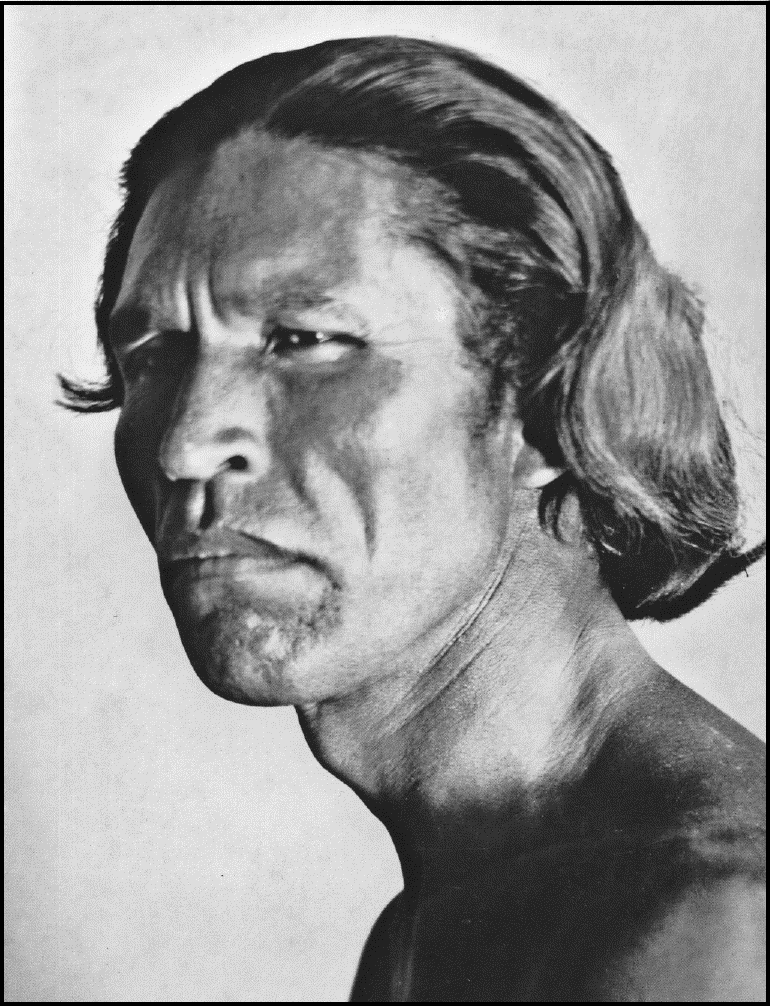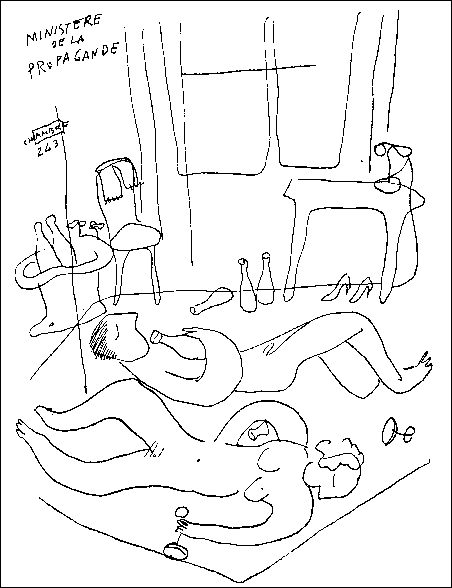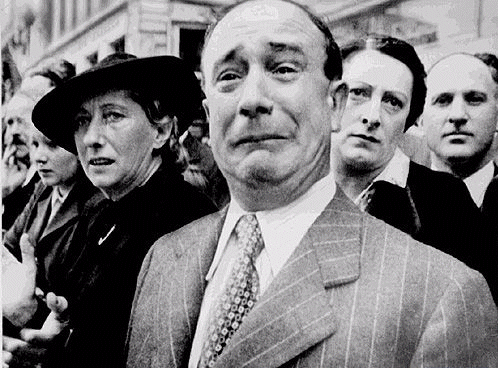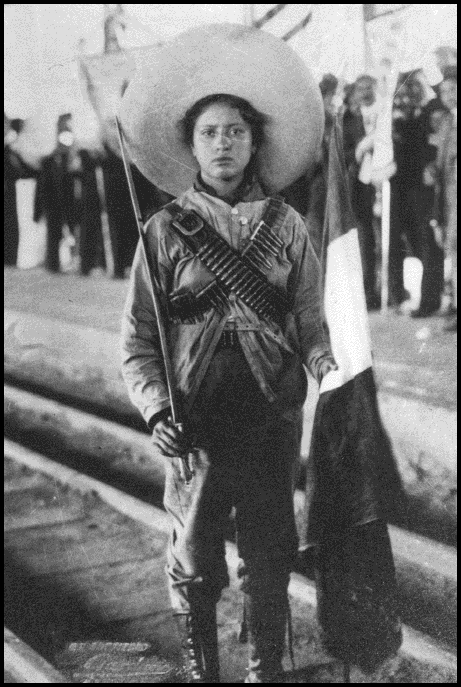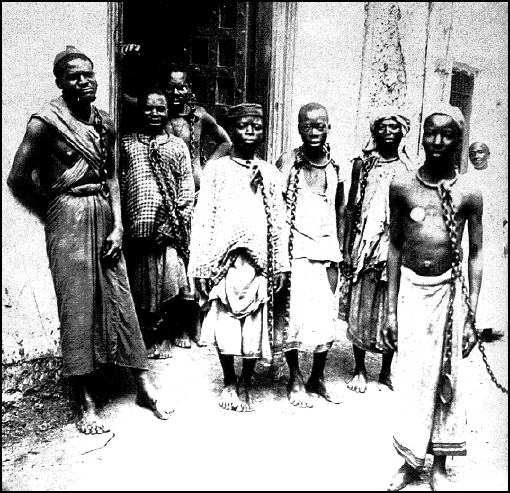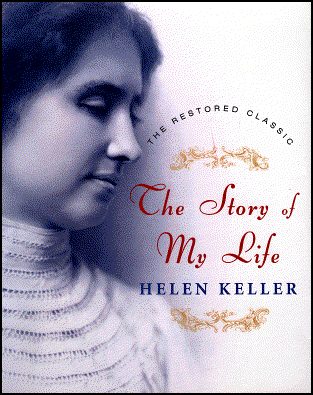pictures that we use to accompany
our reviews, articles, or poems.
Here are twelve shots that are called up most often,
along with the appropriate writings.
The Hidden Legacy
Pierpaolo Mittica
(Trolley Books)
The facts are now well known. Nuclear reactor number four exploded on 26 April 1986 at Chernobyl, in the Ukraine. The radiation levels in the worst-hit areas of the reactor building have been estimated to be 5.6 roentgens per second which is equivalent to more than 20,000 roentgens per hour. A lethal dose is around 500 roentgens over 5 hours. Clouds of radioactive dust swirled across Russia, into Sweden and Norway and parts of England, and ultimately through the world (even areas of Canada and America were affected by May 6 of that year). Belarus was the worst hit, with 30% of its area contaminated, "stretching over 260,000 square kilometers of land (almost as large as Italy.)" It will, reports Mittica, "return to normal radioactive levels in about 100,000 years time. Almost 20 years have gone by, so we have another 99,980 to go."500 villages and settlements were evacuated, "out of these more than 100 have been buried forever."
At the present time nine million people in Belarus, the Ukraine and western Russia continue living in areas with very high levels of radioactivity, consuming contaminated food and water.
"There has been an increase of 100 times of the incidence of tumors of the thyroid, 50 times in other radiation-related tumors, such as leukemia, and bone and brain tumors."
Chernobyl is not the past. Chernobyl is not history. Chernobyl is the beginning.
Go to the complete
review
Moko Maori Tattoo
Hans Neleman,
Photographer
(Edition Stemmle)It's a question of face, isn't it? --- "the face we prepare to face the world." It is the part of us that presents the Me to all the other Me's.Many women of the west paint their lips and cheeks, shade their eyes and eyelashes, hang decorations from the ears. This is supposedly to enhance one's beauty, make one more interesting or desirable. But if I am Hindu, a third eye painted above the bridge of my nose is not for sensual purposes, it, instead, tells the world of my religious beliefs.
Contrariwise, if I am a young American, sticking pins in the eyebrows, a jewel through the nose, a ring in the lips --- I am showing all who meet me that I am different, and that I am willing to go through pain to assert that difference.
All these have one element in common: the third eye, the lipstick, the rings can all be removed. But there is no going back with the facial tattoo of the Maori. It is a painful process of design which states publicly one's passionate belief in one's people, and their ways, and their religion and history.
These photographs, almost a hundred in number, are a wonderful peek at a culture of artful difference. Some of the tattoos are delicate, understated. But some are a poke in the face, so to speak, at the world. Sinn Dog's decoration, running across the lower half of his face --- like a mask --- including nose, lips, cheeks and chin, proclaims MONGREL FOR LIFE. He is an ominous-looking dude, with or without tattoo. Meeting him in a bar, I would suspect most of us would speak to him with caution and some care. His life-time sign, right there before your eyes, says it all.
Go to the complete
reviewE. O. Hoppé's
Amerika
Modernist Photographs
From the 1920's
Phillip Prodger, Editor
(Norton)E. O. Hoppé came to America in 1919, immediately after World War I, intent on setting up a studio to photograph the rich and the prominent in New York City. At times, he also slipped out of his studio to study "the down and the out," the poor people of the Bowery and the Lower East Side.He stayed in this country for two years, returned to Europe, then returned, eventually taking his camera through the northeast, the south and the far west, photographing people, natural landmarks, and industrial America.
These "modernist" pictures make an unusual juxtaposition of horizontal and vertical lines: overhangs, wires, transmission towers, with an artful perspective. Hoppé used a wide-angle lens, one that made it possible to join the distant and the close-at-hand without losing focus.
The editor of this volume suggests that the pictures made in New York, Boston, Chicago, and the manufacturing centers of the middle west are composed much as "a shift supervisor might see them: a cascade of forms in chaotic rhythm, punctuated by the steel beams of the vertical." The majority of the 150 photographs in this volume are what you might label as "Industrial Bleak." But as Marshall McLuhan would have it, the products of yesterday's factories --- indeed, the very factories themselves --- will become tomorrow's antique icons. So it is with these shots of conveyer belts in Detroit, the industrial slums of Alexandria, the Woolworth Building in New York City, the new, uniform suburbs of 1920s west coast America.
Hoppé shows a magisterial hand. He sets his camera perfectly to insert a cross-purpose in every scene: steel beams going that way, transmission lines going this, a roof over there. It is a photographic style that is both architectural and subtly transforming. The stockyards of Chicago reveal a crisscross artistry of light and shadow. The pictures of factories, cityscapes, and buildings chosen for inclusion in Amerika outnumber the studies of faces, but the latter are daring close-ups: faces of beggars, farmers, the poor, blacks, and American Indians [see "Yakima Indian, 1926" above].
Towards the end of my stay in British East Africa, I dined one evening with Mr. Ryall, the Superintendent of the Police, in his inspection carriage on the railway. Poor Ryall! I little thought then what a terrible fate was to overtake him only a few months later in that very carriage in which we dined.A man-eating lion had taken up his quarters at a little roadside station called Kimaa, and had developed an extraordinary taste for the members of the railway staff. He was a most daring brute, quite indifferent as to whether he carried off the station master, the signalman, or the pointsman; and one night, in his efforts to obtain a meal, he actually climbed up on to the roof of the station buildings and tried to tear off the corrugated-iron sheets. At this the terrified baboo in charge of the telegraph instrument below sent the following laconic message to the Traffic Manager:
Lion fighting with station. Send urgent succour.Fortunately he was not victorious in his "fight with the station;" but he tried so hard to get in that he cut his feet badly on the iron sheeting, leaving large blood-stains on the roof.Another night, however, he succeeded in carrying off the native driver of the pumping-engine, and soon afterwards added several other victims to his list.
On one occasion an engine-driver arranged to sit up all night in a large iron water-tank in the hope of getting a shot at him, and had a loop-hole cut in the side of the tank from which to fire. But as so often happens, the hunter became the hunted; the lion turned up in the middle of the night, overthrew the tank and actually tried to drag the driver out through the narrow circular hole in the top through which he had squeezed in.
Fortunately the tank was just too deep for the brute to be able to reach the man at the bottom; but the latter was naturally half paralysed with fear and had to crouch so low down as to be unable to take anything like proper aim. He fired, however, and succeeded in frightening the lion away for the time being. It was in a vain attempt to destroy this pest that poor Ryall met his tragic and untimely end.
Go to the
remainder
of this reading
The Algeria Hotel
France, Memory, and
The Second World War
Adam Nossiter
(Houghton Mifflin)As we read through The Algeria Hotel, we are reminded of Proust, and the question of memory, of one's participation in those memories, of the way we can turn memory any way we choose. The people of Bordeaux, Vichy, and Tulle lived through a bifurcated time --- a time when they were technically being governed by their own countrymen. Those of Bordeaux and Vichy quickly forgot, and they were mostly resentful of the trail, obviously irritated by the questions of the author.Those who lived in Tulle, by contrast, said that they are still haunted by the memories of the 200 of their own who were hung in 1944 by the Nazis. "I was intrigued," he writes, "by the conviction that the town was still suffering."
Nossiter is seeking to understand how individual memories, and the cant of those memories, are to be confronted. If we forget, are we not the better for it? Should we dwell on the past, no matter how sweet, no matter how sad, no matter how brutal?
To the reader the value of this wonderful book comes clear as he tells of his visit to Mme. Godillon, in Tulle. It is the heart of his story, the very reason for his careful study: "Charles Godillon had been a lathe operator at the arms factory, thirty-six years old, a father of two and expecting another child. You could still make out, in faded pencil, the note he had scribbled to his wife on one of those cards before being led out to die --- not knowing, as it turned out, how.
"Goodbye my dearest, my little ones, and all my family that I loved so much. Call the one who is coming Charles, or Marie. I am leaving to be shot: goodbye my love, my dear ones."
The author concludes:
She was visibly shaken by this forced dredging up of her most painful memory, and I left her feeling ashamed of my inquisitiveness. Mme. Godillon had talked, with emotion and sorrow, of others who had died that day, of her own grief, of her intense struggle to make ends meet afterward, and of her solitude. Yet when she made reference to the murder of her husband fifty-five years before, for the first time her tone had abruptly shifted. There was a kind of release. Her statement was like a window onto an intimate reality, one so essential its relationship to the normal pain of loss was not the expected one.
Go to the complete
review
George Rodger
An Adventure in Photography
1908 - 1995
Carole Naggar
(Syracuse)He's not handsome, this weeping man --- not beautiful. But there can be no doubt that this proper, well-dressed man is grief-stricken. More than those behind him, he seems to know what will happen to his city, to his life, to his world over the next four years, for he is standing on the streets of Paris, in 1940, watching the Nazis march in.There are no words necessary. The photograph tells it all.
I've often wondered about the photographer who took this astonishing shot. What did he think? What did he feel? Did he worry about invading a man's sacred space? Did he think that because he was behind a camera he had a right to extract, even gain from another man's grief? Was he weeping too? Did he excuse himself for intruding himself on the man's sorrow (capturing a sorrow that can --- even now --- capture the rest of us?)
Every time I look in the newspapers or magazines or on TV and see just such a picture --- a woman after her son has been murdered; the face of a man whose son has died in the military service; a granny who has been divested of her home by some charlatan --- I think of the photographer who suddenly appears on the scene and without permission envelops someone else's tragedy, stealing it for his own.
Rodger had an answer before he went to the concentration camp. He was creating art. He even described the photos he took at Bergen-Belsen "artistic compositions." He was working, he wrote in his journal, with "honesty," "clarity," "simplicity of purpose."
But something else happened inside of him. Rodger permitted himself to be interviewed but once about his experience, towards the end of his life, in The Guardian.
This natural instinct as a photographer is always to take good pictures, at the right exposure, with a good composition. But it shocked me that I was still trying to do this when my subjects were dead bodies. I realized there must be something wrong with me. Otherwise I would have recoiled from taking them at all. I recoiled from photographing the so-called "hospital," which was so horrific that pictures were not justified ... From that moment, I determined never ever to photograph war again or to make money from other people's misery. If I had my time again, I wouldn't do war photography.
As Naggar reports, "Photographing at Belsen was for Rodger a personal disaster. It triggered a guilt even greater than that he usually harbored, as if being a witness to horror, and taking pictures of it, was something unspeakable and forbidden. As if it somehow made him an accomplice. He was so traumatized by Belsen that for the next forty-five years he could not bear to look at the pictures he had made there and wished he could erase them. Yet Belsen resisted being forgotten."
Go to the complete
review
[Second one down]
Las Soldaderas
Women of the Mexican Revolution
Elena Poniatowska
David Dorado Romo,
Translator
(Cinco Punto Press)If you were a woman, and wanted to help the Revolution, it was best to be with Zapata. The soldiers were always "caballeros." Josefina Bórquez relates how she and four Carrancista friends were detained in Guerrero. When the general arrived in Chilpancingo, Zapata personally delivered them to him. He told his men,Stay behind. Nobody goes with me. I want to show the Carrancistas that I fight for the Revolution, not to take possession of their women.
When a sentry asked, "Who goes there?" he responded,
"Zapata."
"You're Emiliano Zapata."
"I am.""Well, I find it strange that you come without protection."He said of the women, "No one has touched them; I bring them back to you exactly as we found them."The Centaur of the North was not so gentlemanly, and his opponents were not caballeras, either. In Chihuahua, sixty soldaderas were captured. One of them tried to shoot Villa. "Ladies, who fired that shot?" he asked. No one responded. He tied them up "like stacks of firewood or barrels," ready to set them on fire. "The soldaderas screamed, not out of pain, but out of rage. There were no moans coming out of the women's mouths, only insults. They didn't plead for mercy, instead they threatened an impossible revenge."The most blunt, vile and violent insults were heard coming from those piles of women pressed tightly against each other by the ropes. Sixty mouths cursing at once...
After they were afire, "the women never stopped cursing Villa."
And after the blaze completely covered them, Villa heard a hoarse voice screaming from the pyre: "You dog, son of a bitch! You will die like a dog!"
There are almost fifty photographs from 1910 - 1920 reproduced here. They come from a collection of some 30,000 of the Revolution, and are located in the Fototeca Nacional in Pachuca.
Go to the complete
review
Waiting for the
End of the World
Richard Ross
(Princeton Architectural Press)Richard Ross has a fascination with what were once called "fall-out shelters," and here he has sought out thirty-two of them, including those from strange far-off worlds like China, Russia, Switzerland, Montana, and, the weirdest of them all, Utah.Some of them weren't even built in this century, so they weren't necessarily fall-out shelters, unless you call Christian invasion an undesirable fall-out. The Muslims of Acca in what is now Israel built one in 1100 A.D. just to protect themselves from the depredations of those bloody Crusades sent down by the religious fundamentalists of the day. Even further back, in 2,000 B. C. the Hittites of Cappodocia carved a shelter in the hills. The stone was such that it could dissipate the smoke of their cooking fires to help them avoid discovery.
There's a lovely one in St. Petersburg Russia that has been turned into "The Trendy Griboyedov" nightclub. There's a drain-pipe shelter a-building (at $1,000 per linear foot) in Salt Lake City, although the author tells us that since it is not very deep, it will have "limited effectiveness."
Go to the complete
review
Vogue Women
Georgina Howell
(Thunder's Mouth Press)The whole has been divided into ten rather arbitrary subsections --- "royalty," "society girls," "muses," "stars," "waifs," "icons" among others. We get two shots each of Elizabeth Taylor and Jackie Kennedy and Princess Diana and other royalty. Queen Mary --- not the ship but the Queen Mother --- looks, as always, dour, as if the camera were better off somewhere out of her royal face. Sarah Bernhardt seems quite billowy, Grace Kelly looks quite merry, Julie Christie appears hungry, and Twiggy looks to be rather wan. Twiggy is listed here as a "waif," as is Mia Farrow.
There are some surprise appearances. There's Queen Elizabeth, not the ship but Her Majesty, looking like a windblown figure out of the Pre-Raphaelites. Since this is Vogue Women, no men are allowed. Except for a couple of pashas (and dogs popping out of Nena's car). The ladies are our royalty, or what's left of it, although there is the Duke of Windsor frowning out of a Gothic window, next to the toughest Vanity Fair woman of them all. There's also Prince Charles, aged 11 months, being peered at lovingly by Princess Elizabeth. Caroline of Monaco is allowed one tux-dressed male, but all they give to Marilyn Monroe is a sheet. Stella Tennant appears with a ring in her navel, and Barbara Streisand sports a hat left over from the Cavaliers, or is it the Roundheads? Princess Anne gets a horse, and Marlene Dietrich a tutu.
There is a set to all this. No uglies please. No smiles, either; well, maybe five or six --- the best being awarded to Shirley McLain, or Diana Vreeland. No rags, nor clothes from Target (pronounced, for purposes of this volume, in the style of the French, "Tar-SHAY,") although Mother Teresa's head-cloth (what's she doing here?) looks simple but, somehow, fashionable. They put her on the same page as Margaret Thatcher who looks just like she ate a bug.
Go to the complete
review
Empire
The Rise and Demise of the British World Order
And the Lessons for Global Power
Niall Ferguson
(Basic Books)Part of the fun of it comes from the facts, dozens and dozens of contrary facts that the author delights in:
- Those buccaneers of the Spanish Main were little more than common thieves --- dutifully commissioned by the kings and queens of England.
- The Seven Years War was "the nearest thing the eighteenth century had to a world war."
- The Pilgrims thanked God for the fact that 90% of the American Indians had died of disease before they arrived: "The Hand of God," said the Governor of Carolina, has been "eminently seen in thinning the Indians to make room for the English."
- Paul Revere didn't shout "The British are coming!" but "The regulars are out," (Americans were still British in 1775);
- The Declaration of Independence was signed on 2 July 1776 (Thomas Jefferson misdated a letter announcing the event).
- "In economic terms, the continental colonies remained of far less importance than those of the Caribbean," which may be one reason the war to hold on to them was not persecuted more vigorously.
- The English criminals who got shipped off to Australia between 1787 and 1853 were mostly nabbed for petty offenses; thus "Australia literally started out as a nation of shoplifters."
- The Indian Mutiny of 1857 was no mutiny, but "a full-blown war."
- And rather than being over lard-coated cartridges, it was Indian's fear of English attempts to "Christianize India."
- Africa today "is a far more Christian continent than Europe ... and there are more Anglicans in Nigeria than England." Why? Because of "the development of effective quinine based prophylactics against malaria. That made being a missionary a far less suicidal vocation."
- John Newton, the author of the popular hymn, "Amazing Grace" was a prosperous slave trader.
Ferguson spices his history with juicy bits of gossip, quotes from current journals and newspapers, and even satiric songs of the era. When Cecil Rhodes embarked on war with Lobengula in Matebele, his troops used a new "secret weapon:" the Maxim which could fire 500 rounds a minute. In 1893, in the battle of Shangani River, 1,500 Matebele warriors were killed while only four British died. The English Liberals penned a bitter satire on the victory, which Rhodes' men --- the Chartered Company Volunteers --- then cynically adopted as their anthem:
Onward Chartered Soldiers, on to heathen lands,
Prayer books in your pockets, rifles in your hands.
Take the florious tidings where trade can be done,
Spread the peaceful gospel --- with a Maxim gun.Tell the wretched natives, sinful are their hearts,
Turn their heathen temples into spirit marts.
And if to your teaching they will not succumb,
Give them another sermon with the Maxim gun...When the Ten Commandments they quite understand,
You their Chief must hocus, and annex their land;
And if they misguided call you to account,
Give them another sermon --- with a Maxim from the Mount.Ferguson is the author of The Pity of War and The House of Rothschild which I will probably be moving on to after I, dragging my feet, pacing it as slowly as possible, get to the very last pages of Empire.
Go to the complete
review
In the South Bronx
Of America
Mel Rosenthal
(Curbstone Press)Rosenthal is convinced that his community fell apart because of political expediency:The burning of the South Bronx didn't just happen by accident, but was the result of decisions made by politicians, businessmen, government officials, and urban planners. The factors we have to examine to understand the burning of the South Bronx are the building of the Cross Bronx Expressway (which cut through the homes of tens of thousands of families), the building of Co-op City (a gigantic complex of affordable housing in the East Bronx which led to "white flight")...and the migration of poor people from places where there were no jobs and hopes...
He goes on to suggest that the destruction was promulgated as a policy of "planned shrinkage," by the New York City HUD and specifically, through the offices of one Roger Starr, an official at Housing and Urban Development:
Planned shrinkage called for the systematic withdrawal of basic services --- including police, fire, health, sanitation, and transportation --- from poor neighborhoods to make them, unlivable and thus drive the poor out of the city.
On the last page of the book, there is a quote from the Bronx Marketing Project, New York City Dept. of General Services:
Your business will have room to grow in the Bronx. You don't have to worry about the spiraling rents, lack of space, congested streets, parking shortages, and a host of other problems that plague expanding businesses elsewhere. The The Bronx has prime real estate that is affordable. No inflated prices like Westchester, New Jersey, or Long Island. The City of New York is planning to sell prime parcels of real estate for retail, light manufacturing, office and industrial development. These are properties which the city has held from sale until the market was right. Now the market is right. You can own real estate in thriving, busy commercial centers, industrial enclaves, and growing residential areas.
Rosenthal, with elegant irony, places this puff-piece under the picture below.
Go to the complete
review
The Story of My Life:
The Restored Classic
Helen Keller,
Roger Shattuck, Editor
(Norton)There is one thing that haunted Sullivan and it was the one place, I suspect, where she failed. This period in American life was the time of freaks being put on show. Tom Thumb. The Fat Lady. The Siamese Twins. The Bearded Lady. Anne wanted to protect Helen from being displayed as a "prodigy." But her personality, and the need for money, made it so that before her eighth year, she had been written up in the public press. She quickly went out in the world, insisting on kissing all those she met, delighting people with her curiosity, her agile mind, and her "luminosity."Helen met with and was befriended by many of the political, scientific, literary, and theatrical stars of the day: Mark Twain, Alexander Graham Bell, John Greenleaf Whittier, William Dean Howells, Edward Everett Hale, Oliver Wendell Holmes:
There was an odor of print and leather in the room which told me that it was full of books, and I stretched out my hand instinctively to find them. My fingers lighted upon a beautiful volume of Tennyson's poems, and when Miss Sullivan told me what it was, I began to recite:
Break, break, break
On thy cold gray stones, O sea!But I stopped suddenly. I felt tears on my hand. I had made my beloved poet weep, and I was greatly distressed.
She was on display her whole life, but because of her generous personality, and the generous love that flowed between the two of them, she was almost always in good spirits. Even her description of those times when she was sad carry not only a lovely melancholy, but one that inevitably ends in joy:
Sometimes, it is true, a sense of isolation enfolds me like a cold mist as I sit alone and wait at life's shut gate. Beyond there is light, and music, and sweet companionship; but I may not enter. Fate, silent, pitiless, bars the way. Fain would I question his imperious decree; for my heart is still undisciplined and passionate; but my tongue will not utter the bitter, futile words that rise to my lips, and they fall back into my heart like unshed tears. Silence sits immense upon my soul. Then comes hope with a smile and whispers, "There is joy in self-
forgetfulness." So I try to make the light in others' eyes my sun, the music in others' ears my symphony, the smile on others' lips my happiness. Go to the complete
review
